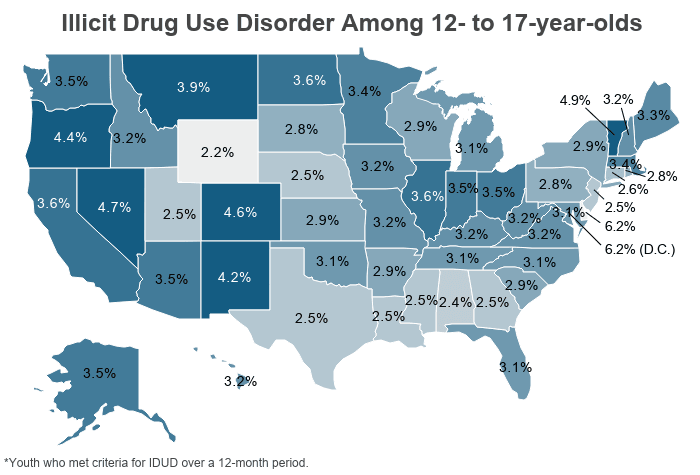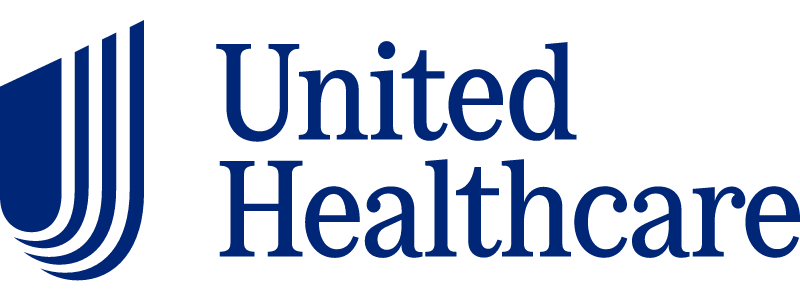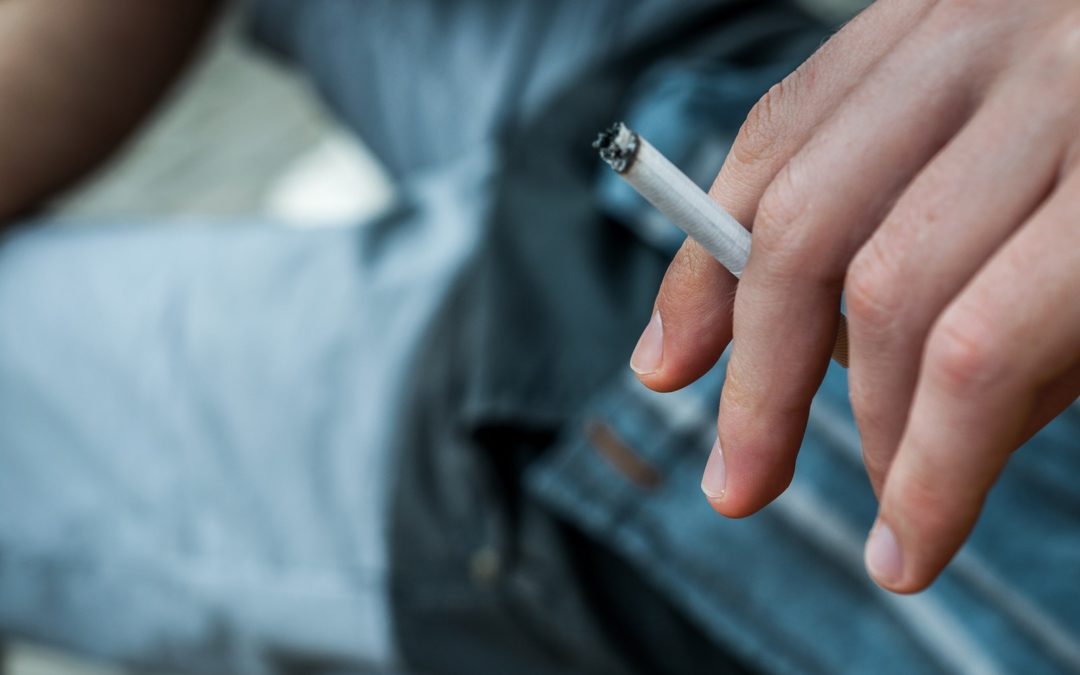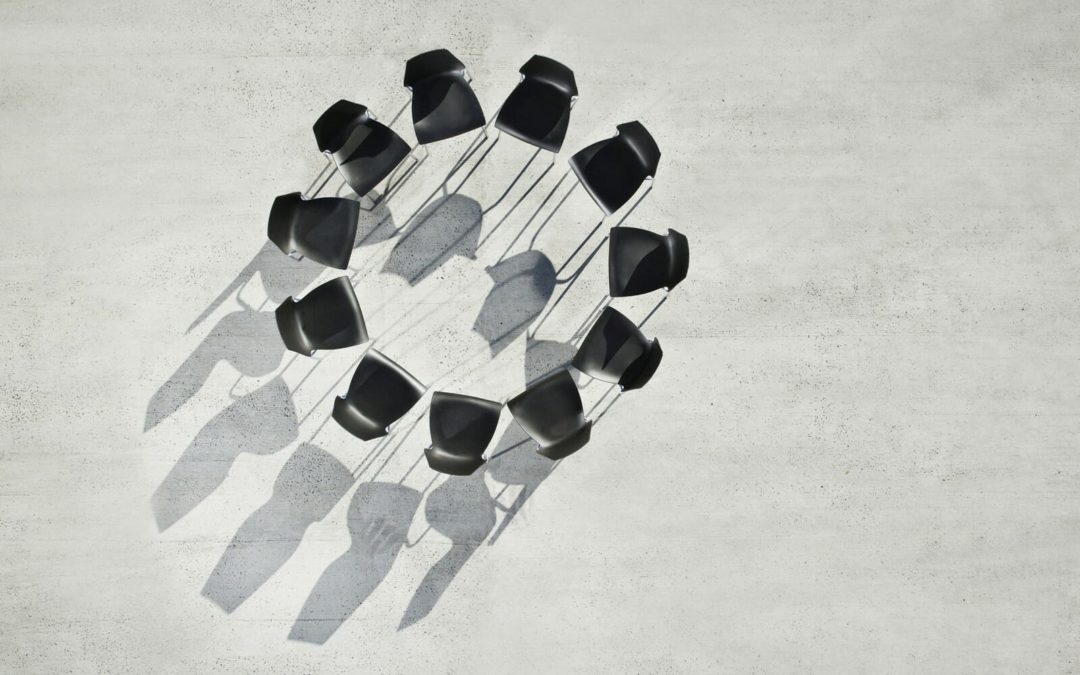Table of Contents

Updated and Fact-Checked by: Christine Zambos, LMFT
Updates list:
-
-
- Updated data from new Resources and Added 2024 data
- Added charts supporting data
- Added more insights per substances
- Added New insights
-
There is a growing trend of substance use disorder among teens in the United States. This is worrisome among parents, health professionals and educators who understand the consequences it can have on teenage brain development.
Parents should stay up to date on the latest trends in teenage drug use to easier communicate with their teens making it less of a “taboo” topic in the home.
Drug use among teens is not just a current problem. From the psychedelic era of the 1970s, to heightened cocaine use in the 90s—teens are particularly vulnerable to trendy drugs often glorified in pop culture, music and media.
Teen Drug Abuse
Teen drug abuse is not a one-size-fits-all diagnosis. The reality is that teens experiment with drugs for a number of reasons. According to the National Center for Drug Abuse Statistics, 46% of teens have tried an illegal drug by the time they reach 12th grade.
Of course, this doesn’t mean “all teens do drugs” as sometimes portrayed in the media. However, parents should be mindful that the earlier teens try drugs, the risk for developing a problem in adulthood increases.

Credits: https://drugabusestatistics.org/teen-drug-use/
Warning Signs of Teenage Drug Abuse
Different drugs have their own set of physical and mental health effects. There are some general signs parents should be mindful of that can point to a substance abuse problem in your teen:
- Sudden changes in behavior that seem unusual or erratic
- Decrease in academic performance
- Lack of motivation or loss of interest in activities
- Frequent emotional outbursts
- Violent behavior
It’s important to note that these signs don’t always mean drugs.
Risk Factors Leading to Drug Abuse in Teens

From social pressures, to mental health problems—here are a few risk factors that can increase the likelihood of teens falling prey to drug abuse.
- Family history of drug or alcohol abuse
- Physical, sexual or verbal abuse
- Depression
- Anxiety
- Certain personality disorders
- ADHD
- Social peer pressure
- Increased academic pressure
Teens experience many of the same pressures as adults such as difficult living situations, problems in relationships and interpersonal conflict.
Teenagers exposed to trauma have much higher rates of potentially developing an addiction to alcohol or narcotics as a way to self-medicate. This increases further if drugs and alcohol are used by adults in the home.
While some teens are pre-dispositioned to substance abuse, others engage in drug use because of situational influences. This can include peer pressure, increased academic stress or improving athletic performance.
What Drugs Are Teens Using?
There is not one single drug only teens use. Although there are a few that tend to be more accessible.
Alcohol
The easy availability of alcohol makes this much more socially acceptable among teens compared to illicit drugs. Nearly 40% of highschoolers have reported using alcohol in 2021. Alcohol abuse among teens can lead to physical and mental health effects including:
- Decreased academic performance
- Increase in depression and anxiety
- Memory loss
- Problems concentrating
- Stunted brain development
- Gastrointestinal problems
- Anger issues
- Loss of creativity
Marijuana
Many states throughout the US have legalized the use of medicinal and recreational marijuana, in 2020 nearly 43% of highschoolers reported trying marijuana.
Although less dangerous than many of the other drugs discussed here, cannabis use in teens can lead to poor problem-solving skills, decrease in focus, lack of motivation, problems in relationships and lowered academic performance.
Current trends in culture such as music, fashion and art have made the use of marijuana among teens more glorified than in the past.

Prescription Medication
Like alcohol, prescription pills are much easier to access than the other illicit drugs discussed here. They can often be found throughout the home or easily purchased off the street. Parents should ensure medication is kept in a safe space where teens or kids cannot easily access them.
Common prescription medication often sold on the streets for recreational use include Vicodin, Percocet, Xanax, and Valium. Among teens, the most common are stimulants such as Adderall and Ritalin. These are often known as “study drugs”.
Stimulants
Stimulants are a form of drugs that increase dopamine and heighten activity in the brain. Two of the most common are Cocaine and Methamphetamine, often sold in the form of a white powder. Long-term use can lead to:
- Heart attack
- Stroke
- Seizures
- Psychosis
- Tooth decay
- Skin picking
- Increased anger
- Violence
They are most commonly found in party settings. These extremely potent stimulants can lead to stroke, heart attacks and seizures. It’s important for teens to be made aware of the effects of this drug, but for peace of mind the rates are pretty low—with only 1.2% of 12th graders reporting having tried cocaine, and even less for Meth.
Heroin

Considered one of the deadliest drugs with the highest rates of overdose, thankfully, this rate is quite low among teens. In 2023 only .04% of highschool seniors had ever reported trying heroin, also known on the street as smack.
Injectable drugs where needles are shared is one of the number one ways HIV is spread. Signs of heroin use may include:
- Excessive sleeping
- Decreased heart rate
- Slurred speech
- Skin picking
- Inability to function in everyday activities or basic self care
- Needle marks in the arms or legs
- Tooth decay
Psychedelics
Also called hallucinogens, these may include LSD, magic mushrooms, DMT, PCP, peyote or salvia. In 2021 only 4.1% of highschool seniors reported trying psychedelics.
They can greatly impact teenagers with genetic predispositions or underlying mental health problems, causing psychosis, paranoia, or a “bad trip”.
Inhalants
Unfortunately some drugs are not always found on the streets. Due to curiosity and the desire to experiment, over half a million adolescents in the United States have tried inhalants. These provide a quick high and may include huffing paint, laughing gas or “whippets”.
Inhalants provide a quick high, yet are extremely risky. Every time inhalants are taken oxygen is cut off to the brain. This can cause damage to other internal organs such as heart attack, stroke, kidney failure or problems to the liver.
Support for Teen Drug Abuse
If you feel your teen is abusing drugs, it is never too late to get them help and be there as a form of support. We offer several levels of care to meet teens and their families no matter what stage of the recovery journey they are at:
Residential Treatment: Our residential program provides intense therapies, medication management and recreational activities in a 24/7 structured facility. This is the highest level of care and often recommended for teens in active addiction who need to get clean from drugs or alcohol.
Partial Hospitalization: PHP is the second highest level of care, offering similar structure as residential, except teens will go back to their homes in the evening. This intensive day program can help teens transition out of residential and build on the skills they learned during their time in inpatient treatment.
Intensive Outpatient: Our IOP is recommended as part of an effective aftercare & transition plan to help teens gradually transition back to their community and receive ongoing support to prevent relapse. IOP is a flexible treatment approach, meeting a few times per week. Teens will participate in a combination of individual, group and family therapies to support their long-term recovery from drug & alcohol abuse.
Clearfork Academy provides trained and guided support for substance abuse issues, while also addressing underlying mental health conditions that could be contributing to addiction. If you are ready to begin the road to recovery for your teen, reach out to our admissions team today.
Sources
Teenage drug use statistics [2023]: Data & Trends on abuse. NCDAS. (2024, May 2).
Austin Davis, LPC-S
Founder & CEO
Originally from the Saginaw, Eagle Mountain area, Austin Davis earned a Bachelor of Science in Pastoral Ministry from Lee University in Cleveland, TN and a Master of Arts in Counseling from The Church of God Theological Seminary. He then went on to become a Licensed Professional Counselor-Supervisor in the State of Texas. Austin’s professional history includes both local church ministry and clinical counseling. At a young age, he began serving youth at the local church in various capacities which led to clinical training and education. Austin gained a vast knowledge of mental health disorders while working in state and public mental health hospitals. This is where he was exposed to almost every type of diagnosis and carries this experience into the daily treatment.
Austin’s longtime passion is Clearfork Academy, a christ-centered residential facility focused on mental health and substance abuse. He finds joy and fulfillment working with “difficult” clients that challenge his heart and clinical skill set. It is his hope and desire that each resident that passes through Clearfork Academy will be one step closer to their created design. Austin’s greatest pleasures in life are being a husband to his wife, and a father to his growing children. He serves at his local church by playing guitar, speaking and helping with tech arts. Austin also enjoys being physically active, reading, woodworking, and music.




